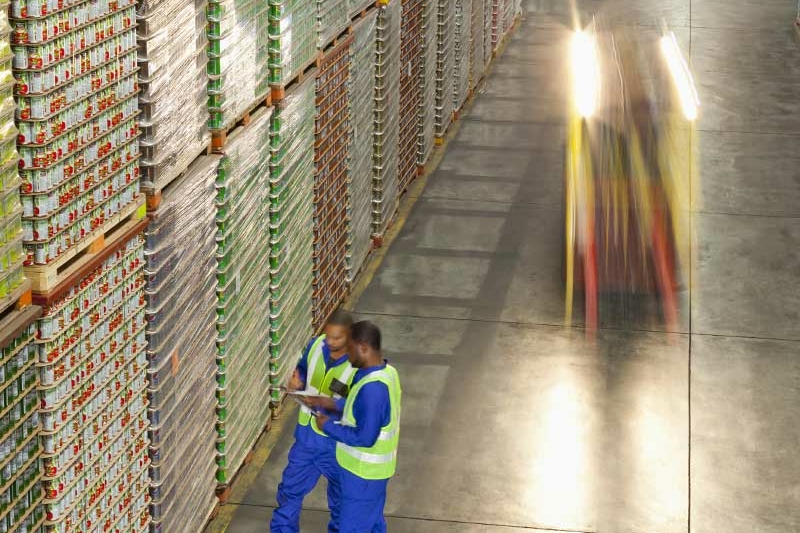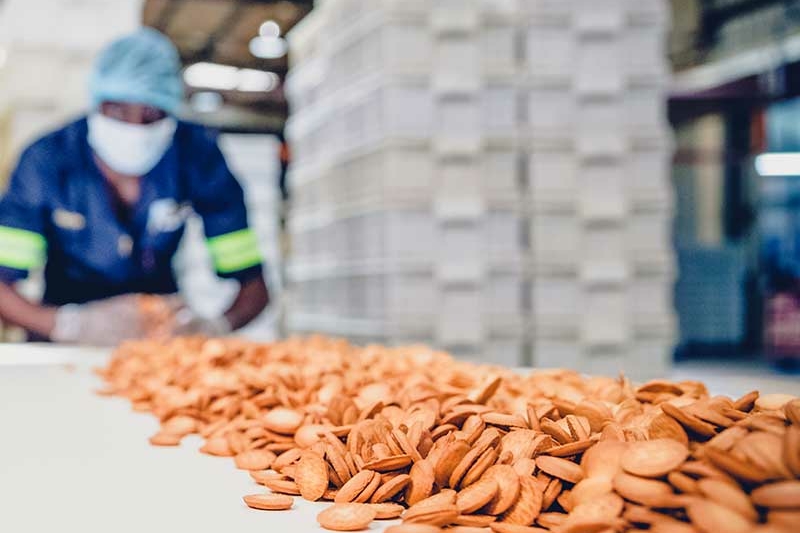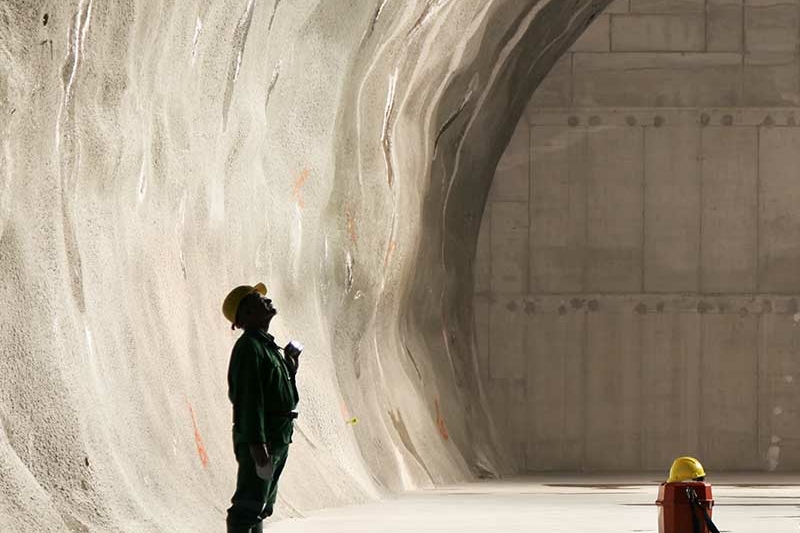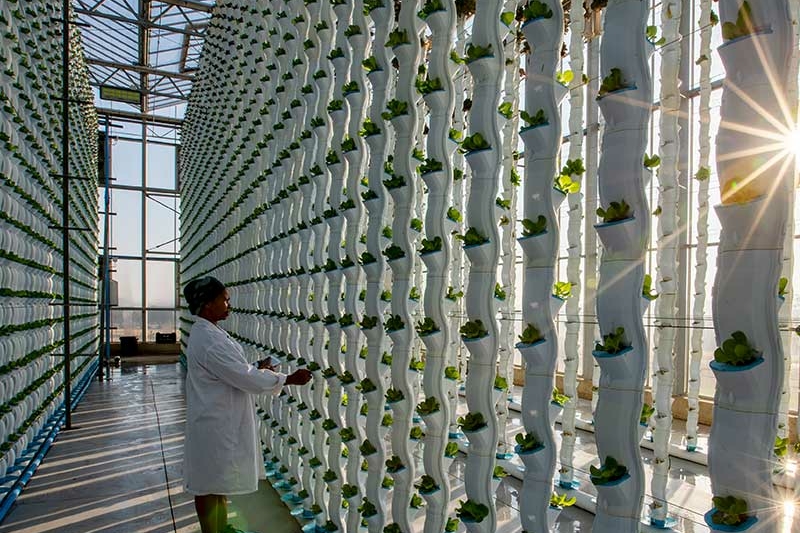Making the trading system work for Africa
The African Continental Free Trade Area could trigger a new era in intra-African trade.

By Mukund Dhar, Africa Interest Group Leader
As our last edition of Africa Focus was published in September 2020 in the midst of the COVID-19 pandemic, some progress had been made on the development, trial and authorization of COVID-19 vaccines. However, there was no assurance of efficacy or effectiveness, and there was profound uncertainty in our personal and professional lives, with unprecedented upheaval in the global economy.
This spring 2021 issue comes to you in a changed environment: Multiple vaccines have been approved; millions of vaccine doses are being manufactured and administered every day; and a return to normality feels no longer like a matter of hope, but of time. Therefore, while uncertainty in our lives and disruption in the global economy continues, we can perhaps permit ourselves to review the business and legal environment in Africa with a renewed sense of cautious optimism and against the backdrop of groundbreaking changes that raise important issues for companies and financial institutions doing business in Africa.
Nearly the entire African continent is involved with the African Continental Free Trade Area (AfCFTA), a single trade and investment market with a combined GDP of close to US$3.4 trillion. Trading under these new arrangements started on January 1, 2021. At the same time, development finance institutions have mounted a robust response to the COVID-19 pandemic by harnessing support from international investors and aggressively funding infrastructure and development. Several sectors of Africa’s economy continue to offer private equity and venture capital investment opportunities, while multilateral development banks are successfully supporting post-COVID recovery and growth in key African sectors. Meanwhile, innovative technologies and new approaches to decommissioning mining assets are transforming Africa’s mining industry and enabling sustainable exits.
This sixth edition of Africa Focus begins with "Making the trading system work for Africa," which explains how AfCTA's plan for virtually all African nations to open their markets to each other may have arrived at exactly the right time to spark change. "African development finance institutions" discusses how African DFIs are achieving positive impacts by funding recovery responses, leading the way with sustainable lending and attracting commercial lenders to African markets.
The article "Private equity in Africa: Trends and opportunities in 2021" highlights several industries in Africa that remain attractive private equity and venture capital destinations, particularly for those focused on long-term investments, and "Ensuring sustainable exits from African mining" discusses how mining companies can improve the ways they decommission and close their operations as well as factors that mining companies, regulators and other stakeholders can consider when formulating rules to reflect environmental, social and governance principles.
In "European multilateral development banks in sub-Saharan Africa," we examine how multilateral development banks, including the European Investment Bank, the European Bank for Reconstruction and Development and others, are collaborating with other key stakeholders and acting as catalysts for growth.
Finally, in "African mining 4.0: An innovative sunrise for African miners," we discuss how new transformative technologies, rapidly becoming available to the mining industry, are ushering in a new era of increased productivity, efficiency, safety and growth for miners.
We welcome your suggestions for any topics to review in our upcoming issues. For now, we hope this issue of Africa Focus helps you navigate the rapidly changing business landscape and explore current opportunities for doing business and investing in Africa.
The African Continental Free Trade Area could trigger a new era in intra-African trade.

Rising to challenges, funding a recovery response and leading the way to sustainable lending.

Despite challenges, Africa remains an attractive PE and VC investment destination.

The development of mine decommissioning and closure laws.

Supporting post-COVID recovery and growth in key sectors.

Transformative technologies are ushering in a new era of efficiency, safety and growth.


Transformative technologies are ushering in a new era of efficiency, safety and growth1
Subscribe to receive Africa Focus
African miners stand to gain as the world embraces a new digital revolution
With the increasing pace of innovation, accelerated by COVID-19, new transformative mining technologies are rapidly becoming available to the mining industry, ushering in a new era of increased productivity, efficiency, safety and growth for miners.
African miners stand to gain as the world embraces a new digital revolution. New transformative mining technologies allow miners to mine resources that were previously unaffordable and impossible to access.
Transformative technologies will not only increase the bottom for African mining companies. Importantly, adoption of new technologies will also facilitate better environment, social and governance (ESG) performance.
In this article, we survey the state of play in technology and equipment innovation in Africa and discuss the challenges and opportunities facing African mining companies as they embrace new innovative technologies.
African mining companies are rapidly adopting the latest technologies to modernize their operations, yet significant opportunities remain. Figure 1 shows some examples of existing and future mining technologies and their application in the African mining industry.
Widespread adoption of the existing and emerging technologies shown in Figure 1 will allow African mining companies to not only take a huge leap forward technologically but also address critical ESG matters by adhering to newly-formed industry standards.
ESG has been a focal point for the mining industry. The International Council of Mining and Metals (ICMM) recently launched a set of Mining Principles intended to drive responsible production. The Mining Principles define best practices in ESG requirements for the industry through a comprehensive set of performance expectations.2 The requirements include, among other things, a focus on health and safety and environmental performance. New technologies can help address both, but come with their own new challenges.
In December 2020, Ivanhoe Mines and Zijin announced the closing of an equipment financing facility for their Kamoa-Kakula Copper Project in the Democratic Republic of Congo. The project's goal is to produce the world's "greenest copper," and proceeds from the facility to purchase automated underground mobile mining equipment and services.3
Automated mobile mining equipment is the first step towards autonomous machinery that is operated remotely or semi-remotely, which in turn reduces the risks of injury to employees as they will not be directly at the mine face, thereby reducing human exposure to risks like rock-falls, earth tremors and other dangerous situations. Africa's newest mines, like the Kamoa-Kakula Copper Project, are being designed for continuous progression towards autonomous mining over time, starting with automated equipment. Newer mining methodologies can also open new opportunities by making previously uneconomic deposits viable while vastly improving safety, as witnessed at another of Ivanhoe Mines' projects, the Platreef platinum mine, which relies on massive mining methods, in contrast to the narrow vein mining methods used by most other PGM miners in Africa.
However, some argue that the usage of automated and autonomous machinery may have collateral implications on jobs and surrounding communities around mine sites, which rely on the mines for employment. The mining industry, particularly in Africa, is traditionally very labor-intensive. Automated and autonomous mining methods require more highly skilled employees and ultimately less people at the mine face, but this does not necessarily lead to overall less employment in the vicinity of the mine after secondary employment is taken into account. The resultant transition of the labor force needs to be carefully managed with communities, governments, labor unions and employee representatives before new technologies are implemented. Where possible, employers need to investigate re-skilling and retraining their employees to meet the changing skill sets required by these new technologies. Even though certain new jobs will be created (autonomous/remote-vehicle managers, etc.), if there isn't a managed process of transition in place, these changes may not be accepted by affected communities and host governments, and miners will struggle to maintain their social license to operate.
Investors, customers, and host communities are increasingly scrutinizing the environmental and social impacts of mining operations. New technologies enable miners to reduce their carbon footprint, improve the efficiency in which they use non-renewable or scarce resources and minimize the amount and hazardousness of waste generated by such operations. From an energy perspective, mines are looking to implement renewable forms of energy generation to reduce greenhouse gases that are otherwise emitted from burning fossil fuels. These renewable energy sources become more attractive with significant advancements in battery storage technology providing power when the sun is not shining or the wind is not blowing.
The effects of climate change are predicted to cause droughts in many areas where mining activities are conducted. In these areas, technologies that allow mines to use water resources more sparingly and, where possible, re-use or recycle water will become essential for promoting the longevity and sustainability of the mining industry while building resilience against the effects of climate change.
With investors, funds and commercial banks all more aware of ESG-related risks and impacts, it may become increasingly difficult to finance mining operations and related expansions and extensions because of internal policies and international regulations and policies such as the Equator Principles, IFC Standards and World Bank Guidelines. The mines of the future, which incorporate cleaner and/or more efficient technologies, will ultimately find it easier to secure funding. But there is a transition ongoing for funders as well: the "mines of the future" necessarily require funding of sometimes unproven technologies, which may in turn face challenges getting approved by investment and/or credit committees, especially among more "traditional" funders in the sector.
Innovation, including through improvement of safety and environmental efficiencies (in line with ICMM's Mining Principles) will allow African miners to build mines of the future that are not only sustainable but also better capable of securing funding for expansions and additional innovative technologies. (Figure 2)
Despite still lagging behind technological advancements, mining laws across Africa continue to evolve, and so the miners that embrace and lead change will reap the early bird rewards. The mine of the future requires "leadership that embraces a culture of data-led decision-making and a new way of thinking and operating."4 While miners will encounter countless legal considerations, we set out a couple of key ones.
Implementing new technologies has the opportunity for significant environmental and social improvements to mine efficiency and waste and emissions reductions. However, the implementation of new technologies at mines is often delayed due to lengthy administrative procedures. From a timing perspective, companies need to account for these significant delays in their construction and operational timelines. Given the significant positive impacts that may arise for the mines, the environment and the surrounding communities, governments may wish to reconsider their regulatory processes to allow for streamlined permitting and amendment processes for "sustainable technology" options.
As miners improve their environmental efficiencies, they may be able to take advantage of carbon credit programs. To the extent that alterations to existing projects or new projects meet the "additionality" requirements contemplated under the carbon credit programs, it may be possible for mining companies to generate carbon credits to offset any excesses of their carbon budgets or carbon taxes.
New technologies rely on data transfers, sometimes including personal data, from one party to another, and at times via a service provider's network. Miners will need to ensure any new technologies are implemented in accordance with applicable data protection laws to protect personal data to avoid hefty fines. In addition to the potential disclosures of protected and personal information if databases are breached, if third parties gain operational control of technology and machinery at mines, they could cause significant damage to the environment, health and safety, and mining operations.
Also, as miners incorporate third-party technological advancements into their systems, they may find themselves innovating independently of third party technology and should have in place robust intellectual property management processes to protect their innovations and protect against any inadvertent breaches of third-party intellectual property rights.
Embracing available and future technologies is significant for the resilience and sustainability of the African mining industry, enabling African miners to jump from Industry 2.0 to 4.0.
While the initial set-up costs will be significant, the return on investment over time should create profitability and jobs5 and – importantly – drive ESG performance.
An innovative sunrise for African miners is just around the corner. It looks green as well.
1 This article was previously published in African Mining.
2 https://www.icmm.com/mining-principles.
3 https://www.ivanhoemines.com/news/2020/kamoa-kakula-copper-project-secures-us-420-million-in-project-level-credit-facilities-including-a-eur-176-million-us-211.
4 Deloitte, The Future of Mining in Africa 2018.
5 https://www.miningreview.com/energy/africa-transformative-mining-technology.
White & Case means the international legal practice comprising White & Case LLP, a New York State registered limited liability partnership, White & Case LLP, a limited liability partnership incorporated under English law and all other affiliated partnerships, companies and entities.
This article is prepared for the general information of interested persons. It is not, and does not attempt to be, comprehensive in nature. Due to the general nature of its content, it should not be regarded as legal advice.
© 2021 White & Case LLP